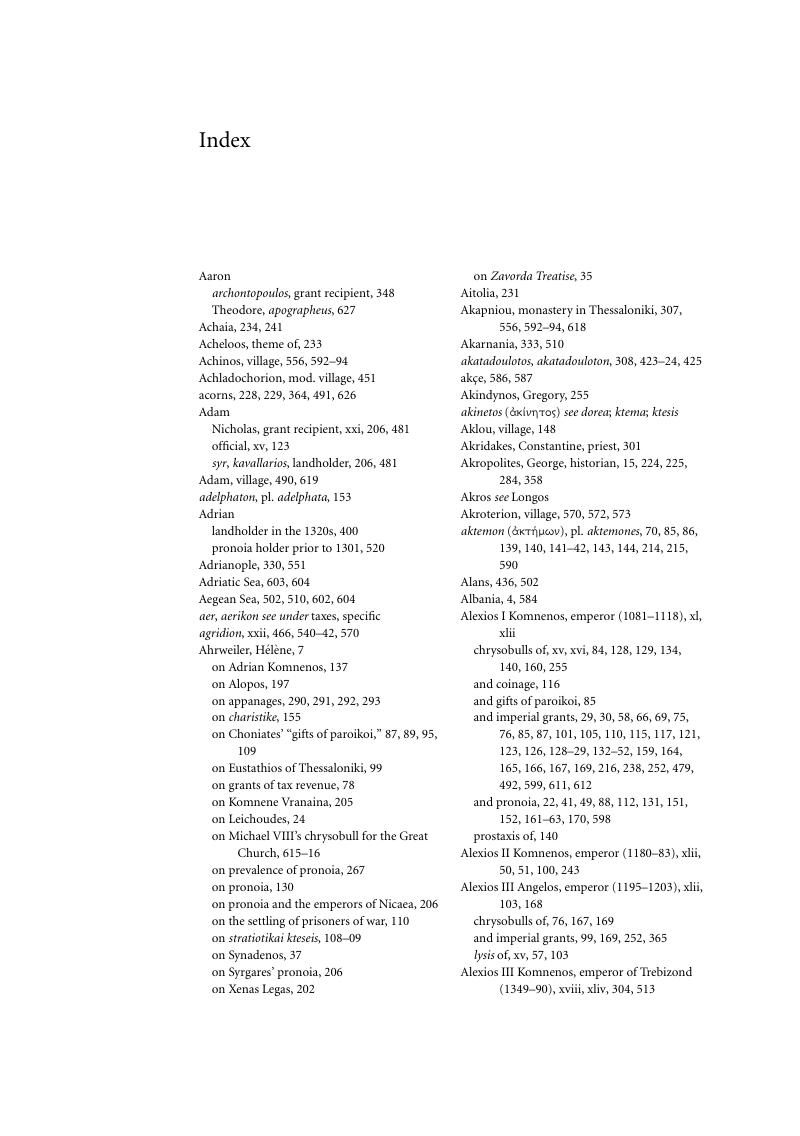Book contents
- Land and Privilege in Byzantium
- Land and Privilege in Byzantium
- Copyright page
- Dedication
- Contents
- Maps
- Figures
- Tables
- List of major sources
- Acknowledgments
- A note on transliteration, pronunciation, and dates
- Abbreviations
- Glossary
- List of rulers
- Frontispiece
- Frontispiece
- Frontispiece
- Frontispiece
- Frontispiece
- Introduction
- 1 The non-technical senses of the word pronoia
- 2 Pronoia during the twelfth century
- 3 Choniates’ “gifts of paroikoi”
- 4 Origins
- 5 Pronoia during the period of exile (1204–1261)
- 6 Pronoia during the era of Michael VIII Palaiologos
- 7 Terminology, late thirteenth and fourteenth centuries
- 8 The nature of pronoia, ca. 1282–ca. 1371
- 9 Pronoia in the later fourteenth and fifteenth centuries
- 10 Pronoia and timar
- Conclusion
- Appendix 1: Chrysobull of Michael VIII Palaiologos for the church of Hagia Sophia (1267–71)
- Appendix 2: A translation of the praktikon of Pergamenos and Pharisaios for Michael Saventzes (1321)
- Appendix 3: A translation of the praktikon of the protokynegos John Vatatzes for the eparchos Michael Monomachos (1333)
- Appendix 4: A note on fiscal privileges
- Appendix 5: The chrysobulls for Dragon and for Manuel Angelos Patrikios
- Bibliography of works cited
- Index
Index
Published online by Cambridge University Press: 05 February 2013
- Land and Privilege in Byzantium
- Land and Privilege in Byzantium
- Copyright page
- Dedication
- Contents
- Maps
- Figures
- Tables
- List of major sources
- Acknowledgments
- A note on transliteration, pronunciation, and dates
- Abbreviations
- Glossary
- List of rulers
- Frontispiece
- Frontispiece
- Frontispiece
- Frontispiece
- Frontispiece
- Introduction
- 1 The non-technical senses of the word pronoia
- 2 Pronoia during the twelfth century
- 3 Choniates’ “gifts of paroikoi”
- 4 Origins
- 5 Pronoia during the period of exile (1204–1261)
- 6 Pronoia during the era of Michael VIII Palaiologos
- 7 Terminology, late thirteenth and fourteenth centuries
- 8 The nature of pronoia, ca. 1282–ca. 1371
- 9 Pronoia in the later fourteenth and fifteenth centuries
- 10 Pronoia and timar
- Conclusion
- Appendix 1: Chrysobull of Michael VIII Palaiologos for the church of Hagia Sophia (1267–71)
- Appendix 2: A translation of the praktikon of Pergamenos and Pharisaios for Michael Saventzes (1321)
- Appendix 3: A translation of the praktikon of the protokynegos John Vatatzes for the eparchos Michael Monomachos (1333)
- Appendix 4: A note on fiscal privileges
- Appendix 5: The chrysobulls for Dragon and for Manuel Angelos Patrikios
- Bibliography of works cited
- Index
Summary

- Type
- Chapter
- Information
- Land and Privilege in ByzantiumThe Institution of Pronoia, pp. 660 - 697Publisher: Cambridge University PressPrint publication year: 2013

